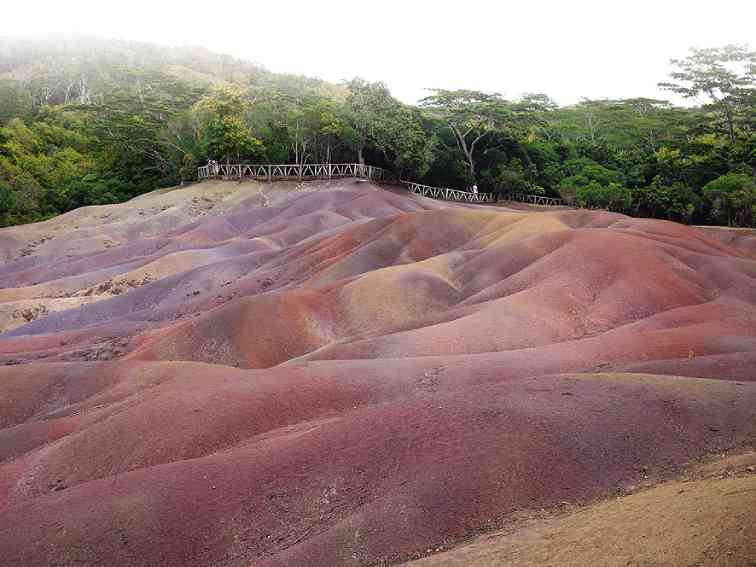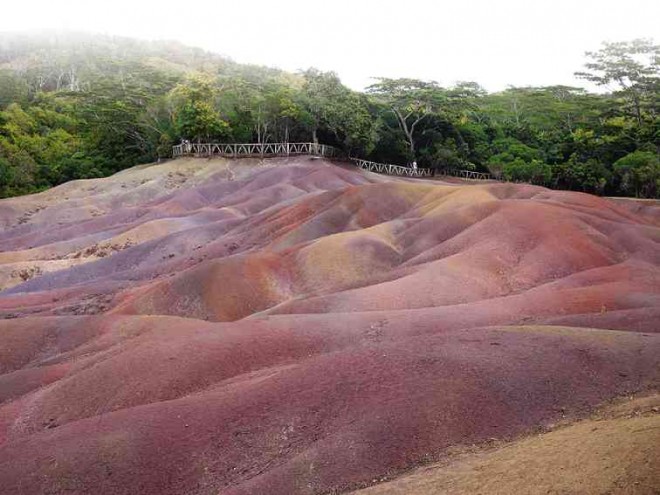
Chances are, you’ve heard of Mauritius only at the Miss Universe pageant—a tiny country mentioned in the same breath as other vaguely exotic, colorful and where-exactly-are-they-in-the-map places such as Aruba, Curacao and Turks and Caicos. Or, if you’re a Filipino of a slightly older generation, you might still remember that a Miss Mauritius once figured in the infamous Metro Manila Film Festival scam of 1994—the late Viveka Babajee (she died of apparent suicide in 2010 in India), whose “Take it, take it!” utterance onstage became, for a time, a staple in the Pinoy pop-culture lexicon.
But it would be a shame if all that Filipinos knew about Mauritius is through the unfortunate misadventure of Babajee in local show biz. For the record, Mauritius is not too far away—nine hours and 45 minutes by plane from Hong Kong, where flag carrier Air Mauritius departs twice weekly for Sir Seewoosagur Ramgoolam International Airport (named after the country’s first prime minister) in the southeastern tip of the island-nation.
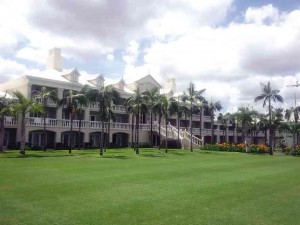
Natural gateway
Its choice location—in the south Indian Ocean off the coast of southeastern Africa, separated from it only by water and the giant island (compared to it, at least) of Madagascar—makes Mauritius a natural gateway to that continent’s attractions, from Cape Town, the cosmopolitan capital of its closest trading partner South Africa; to the highlands of Kenya (Nairobi is merely four hours away by plane) and the veldts of Tanzania and Botswana.
But Mauritius can hold its own as a prime destination. Its long history of colonization, its hybrid culture, its stunning blend of radiant beaches, rich diving sites and varied interiors, its hospitable and multilingual people, recall the charms of another country—yep, the Philippines. Think of a smaller Bohol, which the late travel doyenne Susan Calo-Medina had often plugged as one of the key places to visit in the Philippines because “it has everything, from heritage and hotels to adventure, beaches and great people.”
That description also befits Mauritius. But while its 2,040-sq-km land area is only less than half as large as Bohol’s 4,821 sq km, it has a longer coastline (330 km to Bohol’s 261). That explains why some of the world’s most luxurious resort hotels have all made a beachhead in Mauritius, making it a top holiday hideaway among generations of Europeans.
French heritage
Arab seafarers were the first to explore Mauritius, followed by the Portuguese and the Dutch. When the French came, they bequeathed their laws, language, cuisine and culture on the island, which was originally called Isle de France. Today’s Mauritians speak and write French aside from impeccable English (the official language, taught to all citizens from grade school) and the native tongue Creole.
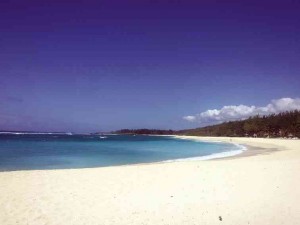
The British who supplanted the French brought in their language and brand of parliament, along with waves of imported Indian labor (the majority of the 1.2-million Mauritian population today are Hindu, followed by Catholics and Muslims), not to mention right-hand driving. But French heritage remains dominant; cities and places ring with such lilting names as Rivière Noire, Saint Aubin and Pamplemousses.
Unsurprisingly, the French comprise the majority of the country’s tourists, flooding the island in the peak months of October to March when what the islanders call winter—essentially a milder, nippy form of its summer season—becomes an ideal time for many honeymooners delighting in Mauritius’ array of romantic vistas and adventure haunts.
The Brits, followed by the Spanish and Italians, are also frequent visitors. But these days, the Asian market—mostly Chinese and Indian—is growing. Brazilians, too, are discovering the island.
Tourism is Mauritius’ main industry, along with information technology, textiles and sugar (vast tracts of land are planted to sugarcane). Tourists numbered some 980,000 last year; this year, the country hopes to hit at least a million, with increased traffic from affluent Asian countries such as South Korea and Japan and fast-developing ones like the Philippines and Malaysia (the airline also has direct flights out of Kuala Lumpur).
Melting pot
But why should Filipinos, who live with a year-round tropical vibe and in the lap of some of the world’s best beaches and natural wonders, go to a country with roughly the same mix of enticements?
“I think our climate, first of all, is one of the things that make us different,” says Rana Ramdaursingh, VP for commercial sales of Air Mauritius. “Most of the time it’s summer here, but it’s not hot—anywhere from 16 degrees to 24 degrees, so it’s a very ambient temperature. We are a melting pot of cultures, and a very welcoming people. Visitors have a lot to discover here. Also, we are a very politically stable country.”
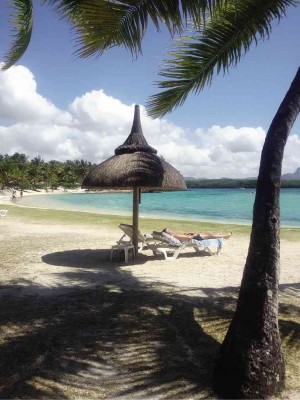
He adds: “We were seen in the past as an expensive destination. Before, we were so much into four- and five-star hotels, but in the last 10 to 15 years we have opened a lot of mid-price hotels, so accommodations have become very affordable.”
Mauritius’ formal hotel sector alone, excluding family stay-ins and the like, counts some 10,000 rooms across the entire island. The accommodations range from the elegant but homey sprawl of the Sofitel L’Imperial Resort & Spa to the ultra-private villa amenities of the Maradiva Villas Resort & Spa.
While the Sofitel So Mauritius sports the signature neon hues and sleek lines of its hip designer Kenzo, the Sugar Beach Resort’s whitewashed, low-rise vintage architecture evokes its historic French-plantation origins.
The family-type Le Victoria Hotel has one of the island’s most secluded coastlines, while La Plantation Hotel, which will close in April this year for refurbishment from a 160- to a 270-room affair, not only has special amenities for visitors with reduced mobility, but also has an added lure in a scenic river flowing beside the property.
Port Louis, Mauritius’ capital, is bustling with markets, promenades and narrow streets, but retains a rustic, old-town feel; by sundown all the shops close, and there isn’t much nightlife. For that, visitors head to the hotels, where some of the best bars and live music are, or to the neighboring district of Grand Baie.
Magical
Those more attuned to sightseeing will love the ease of crisscrossing the island’s well-paved roads to check out its myriad places of interest, such as the Seven-Coloured Earth in Chamarel, a unique stretch of sand dunes streaked in vivid natural pastel colors. There’s also a vertiginous waterfall nearby, part of the Black River Gorges National Park, which offers a panoramic view of Mauritius’ inner mountain range.
A closer view of the island’s flora is afforded by a visit to the Sir Seewoosagur Ramgoolam Botanical Garden in Pamplemousses, a 37-hectare park first built in the 1700s and which now hosts centuries-old trees and various plant species from other countries (including a palm tree from the Philippines). In one corner of the park are trees that had been planted by visiting dignitaries, among them Nelson Mandela and François Mitterand.
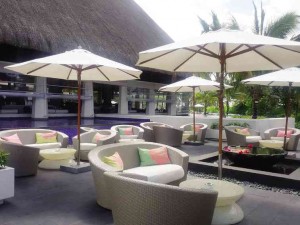
Or one may step back in time to the French colonial era via a Creole lunch of curry dishes at the Saint Aubin Colonial House. The exquisitely restored 19th-
century mansion was the anchor structure in a former vanilla plantation that now houses a distillery making rum from sugarcane.
All these, of course, on top of the crystal-blue waters that beckon from just about every turn or corner the island. A breezy, day-long catamaran cruise across these waters is a perfect highlight of one’s stay in this magical, mesmerizing isle. “Mauritius,” said a writer once, “was made first, and then heaven, and that heaven was copied after Mauritius.”
The writer was the American humorist Mark Twain, and this time he was dead serious.
Air Mauritius’ holiday package includes round-trip economy airfare via Hong Kong on Cathay Pacific or via Kuala Lumpur on Malaysian airlines; round-trip airport-hotel transfer (on seat-in-coach basis); six day-five night hotel accommodations; half-board basis; and free visa assistance.
Contact Air Mauritius via Supersonic Services, Inc. (general sales agent for the Philippines), G/F Colonnade Residences Condominium, 132 C. Palanca Jr. St., Legaspi Village, Makati City. Call 7379777, 7379723-25. E-mail [email protected] or [email protected]

